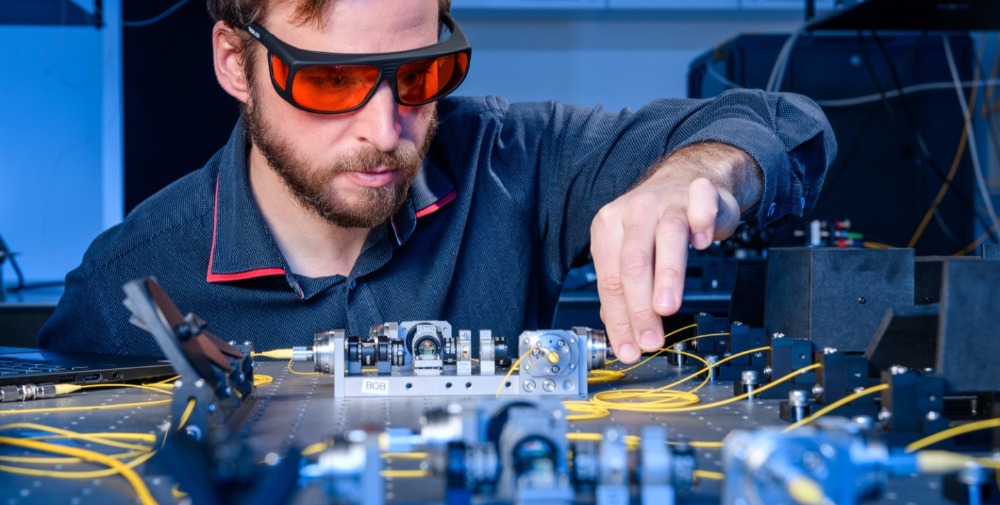
The Application Center Quantum Communication at Fraunhofer IIS/EAS is increasingly becoming a focal point for the development of microelectronic components for this special field of application. Together with partners from industry, the researchers are working on designing components ideally suited to this form of data transmission, characterizing them and testing them in an in-house test environment or with the aid of a test track within Dresden. This is because quantum communication, which is considered forward-looking in order to enable tap-proof information transmission even in the event of attacks by supercomputers, requires special electronics.
“Research into optical components and their miniaturization for the quantum communication of the future has been going on for many years, and great progress is being made in Europe and Germany,” explains Johannes Verst, managing director of the Quantum Business Network (QBN) initiative, of which Fraunhofer IIS/EAS is a member. “However, there is still a lot of catching up to do, especially when it comes to the safe design of miniaturized microelectronics for these assemblies. In this sense, the application center with its offerings ideally complements our network portfolio to further strengthen the innovative power of our community.”
Since not only the optics but also the electronics used for quantum communication are crucial for developing attack-proof overall systems, the Application Center at Fraunhofer IIS/EAS has set its sights on the secure and modular design of these special microelectronics. In this context, the researchers offer companies in this segment a broad portfolio of services – starting with the joint conception of electronic components, through design services, to secure commissioning. For the latter, extensive electronic measurement technology up to the gigahertz range can be used, which is also available for the characterization of circuits.
An in-house quantum communication testbed as well as an inner-city quantum communication demonstrator round off the range of services. Here, polarization-entangled single photons can be used to securely exchange a quantum key – either within the institute building or via a five-kilometer fiber-optic link to a second Fraunhofer institute in Dresden. In the medium term, the scientists are working together with optics experts from Jena to enable quantum key exchange via so-called trusted nodes even over a distance of about 220 kilometers between the two cities. The goal of all test activities is to derive further necessary specifications for the miniaturized electronic components from the practically implemented communication links. These results will then in turn be incorporated into developments at the Quantum Communication Application Center and the QBN network in order to strengthen the German and European economy in this promising field of application.
The expansion of the Quantum Communication Application Center is co-financed by tax funds based on the budget passed by the Saxon state parliament.
About the background.
Many of the cryptographic encryption methods used today, for example in online banking, will in principle be vulnerable in the future due to the advancing development of quantum computers. For this reason, new methods for the secure transmission of data and information must be researched today. Encryption methods that can replace or usefully supplement conventional ones already exist. The basis for each of these is a secret key that is exclusively available to the sender and receiver. This is where quantum communication comes in, and with it systems that use light quanta to enable secret key exchange. This is because quantum keys cannot be intercepted unnoticed due to physical laws. The data to be transmitted, which is encrypted on the basis of quantum technology, can, on the other hand, be transported via a conventional connection.
Further links.
www.eas.iis.fraunhofer.de



